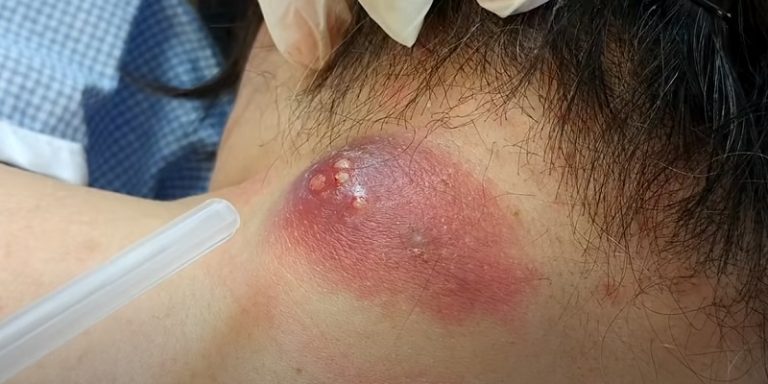Can Real Gold Turn Your Skin Green?

Last Updated on June 18, 2025 by Jaclyn A. Neeley
Gold is often associated with luxury, purity, and timeless beauty. However, many people are surprised to find that their gold jewelry can sometimes leave a green mark on their skin. This phenomenon can be perplexing and even concerning. In this article, we will explore the reasons behind this occurrence, the science involved, and how to prevent it.
Gold and Its Alloys
Pure gold, known as 24-karat gold, is a soft metal that is not suitable for making durable jewelry. To enhance its strength and durability, gold is often alloyed with other metals such as copper, nickel, and silver. These alloys can significantly impact the properties of the gold, including its tendency to cause skin discoloration.
The Role of Alloys
The addition of metals like copper and nickel to gold can lead to oxidation and chemical reactions with the skin. Copper, in particular, is a common culprit. When it oxidizes, it forms copper salts, which can leave a green residue on the skin. Nickel, another common alloy, can cause similar reactions, although it often results in black discoloration rather than green.
Causes of Skin Discoloration
Several factors can contribute to the green discoloration caused by gold jewelry. These include the chemical composition of the jewelry, the environment, and individual skin chemistry.
Oxidation
Oxidation is a chemical reaction that occurs when metals react with oxygen. In the case of gold alloys, the copper or nickel present can oxidize, forming compounds that transfer to the skin and cause discoloration. This process is accelerated by moisture, such as sweat, which contains salts and acids that can further react with the metals.
Corrosion
Corrosion is another factor that can lead to skin discoloration. While pure gold does not corrode, the alloys mixed with it can. For example, silver and copper in gold jewelry can corrode when exposed to moisture and air, forming dark compounds that can stain the skin.
Metallic Abrasion
Metallic abrasion occurs when tiny particles of metal are worn away from the jewelry due to friction with the skin or other surfaces. These particles can appear black or green and stick to the skin, causing discoloration. This is often exacerbated by the use of cosmetics, which can contain compounds harder than gold, leading to increased abrasion.
Individual Factors
The reaction between gold jewelry and the skin can vary significantly from person to person. Several individual factors can influence this reaction.
Skin Chemistry
The pH level of an individual’s skin can affect how it reacts with metals. People with more acidic skin are more likely to experience discoloration. This acidity can be influenced by diet, medications, and overall health. For example, a diet high in meat and dairy can increase skin acidity, while fruits and vegetables can have the opposite effect.
Sweating
Sweat contains salts and acids that can react with the metals in gold jewelry, accelerating oxidation and corrosion. People who sweat more, such as those who exercise frequently or live in hot climates, are more likely to experience skin discoloration from their jewelry.
Medications
Certain medications can alter the chemical composition of the skin, making it more acidic and prone to reactions with metals. Antibiotics and hormonal medications are common culprits. If you notice increased skin discoloration after starting a new medication, this could be the reason.
Preventing Skin Discoloration
While skin discoloration from gold jewelry is not harmful, it can be unsightly and bothersome. Fortunately, there are several steps you can take to prevent it.
Choose High-Quality Jewelry
Investing in high-quality jewelry made from higher-karat gold, such as 18-karat or 22-karat gold, can reduce the likelihood of skin discoloration. These higher-karat golds contain less copper and nickel, which are the primary metals responsible for discoloration.
Apply a Barrier
Applying a clear nail polish or a specialized jewelry coating to the parts of the jewelry that come into contact with the skin can create a barrier that prevents the metal from reacting with the skin. This barrier needs to be reapplied periodically as it wears off.
Keep Jewelry Dry
Moisture accelerates the chemical reactions that cause discoloration. Removing jewelry before swimming, showering, or engaging in activities that cause sweating can help keep it dry and reduce the risk of discoloration.
Clean Jewelry Regularly
Regularly cleaning your jewelry can remove any accumulated dirt, oils, and chemicals that can contribute to discoloration. Use a gentle jewelry cleaner or a mixture of mild soap and water to keep your jewelry in good condition.
Addressing Allergic Reactions
In some cases, skin discoloration may be accompanied by itching, redness, or swelling, indicating an allergic reaction. This is often due to nickel, a common allergen found in many gold alloys.
Identifying Allergies
If you suspect an allergy, it is important to consult with a healthcare professional. They can perform a patch test to determine if you are allergic to nickel or other metals. If an allergy is confirmed, you may need to avoid jewelry containing these metals.
Choosing Hypoallergenic Jewelry
For those with metal allergies, hypoallergenic jewelry made from materials such as platinum, titanium, or stainless steel can be a good alternative. These metals are less likely to cause allergic reactions and are often used in high-quality jewelry.
Conclusion
While real gold can indeed turn your skin green, it is not the gold itself that is responsible but rather the metals alloyed with it. Understanding the causes of this discoloration and taking preventive measures can help you enjoy your gold jewelry without any unwanted side effects. By choosing high-quality jewelry, keeping it dry, and applying protective barriers, you can minimize the risk of skin discoloration and continue to wear your favorite pieces with confidence.
FAQs
Can gold turn skin green?
Yes, gold jewelry can turn skin green, especially if it contains other metals like copper or nickel. The green discoloration is caused by a chemical reaction between these metals and sweat or other substances on the skin.
Does real gold discolor skin?
Pure 24K gold is unlikely to discolor skin, but most gold jewelry contains alloys of other metals like copper, silver, or nickel. These alloy metals can react with skin oils and sweat, causing discoloration even with real gold jewelry.
Is gold real or fake if it turns green?
Turning skin green does not necessarily mean the gold is fake. Even real gold jewelry containing alloy metals like copper or nickel can cause green discoloration on the skin due to chemical reactions. However, fake gold-plated jewelry is more prone to this issue.
What are the symptoms of gold allergy?
Symptoms of a gold allergy can include redness, swelling, itching, discomfort, blistering, and darkening of the skin where the gold touches. The reaction may appear immediately or take hours, lasting for days or weeks.
What causes skin discoloration when wearing gold jewelry?
Skin discoloration from gold jewelry is mainly caused by a chemical reaction between the alloy metals (like copper, nickel, silver) and substances like sweat, oils, lotions, or acids on the skin. Factors like humidity, chlorine, and acidity levels can accelerate this reaction.






